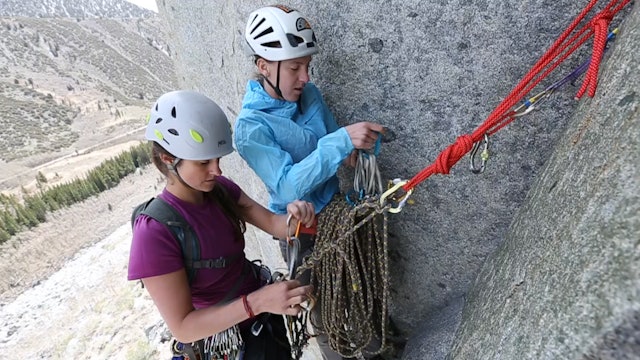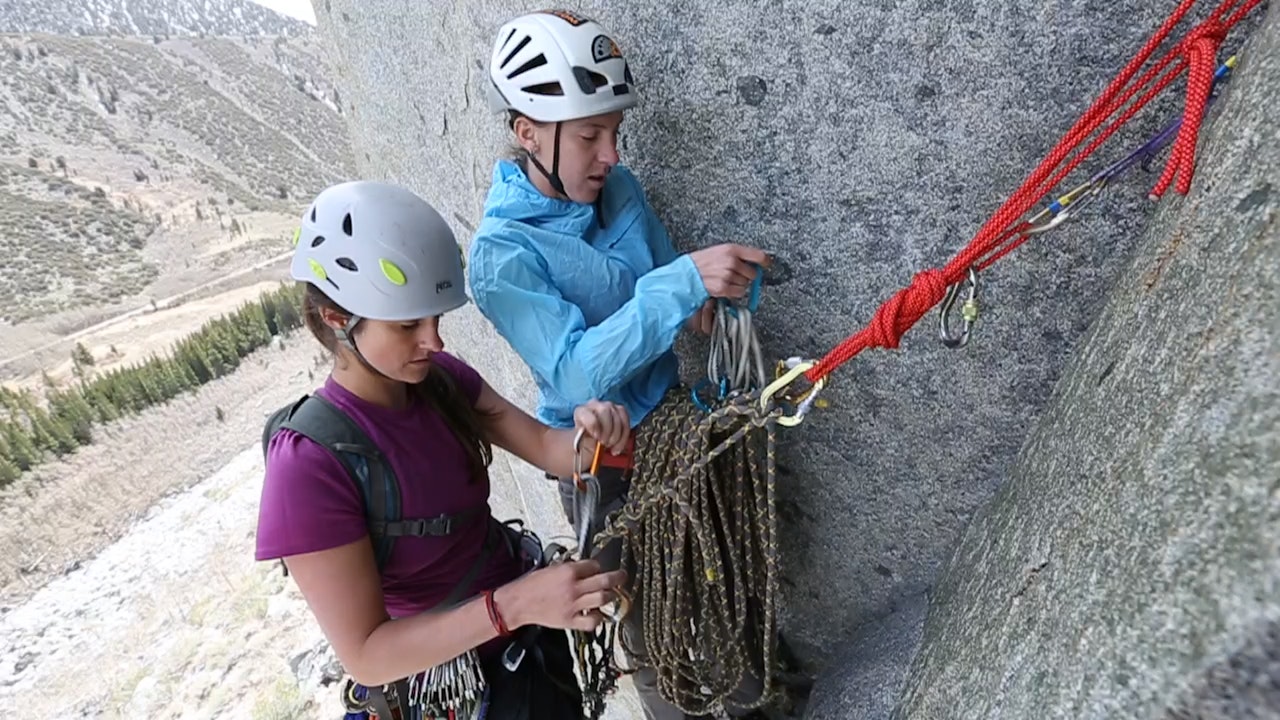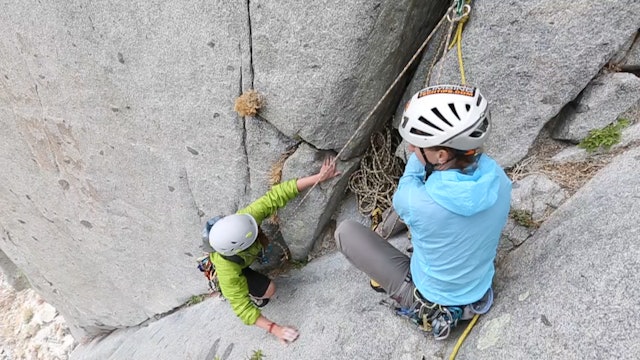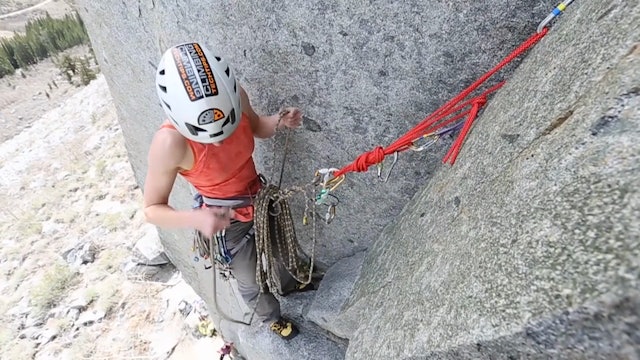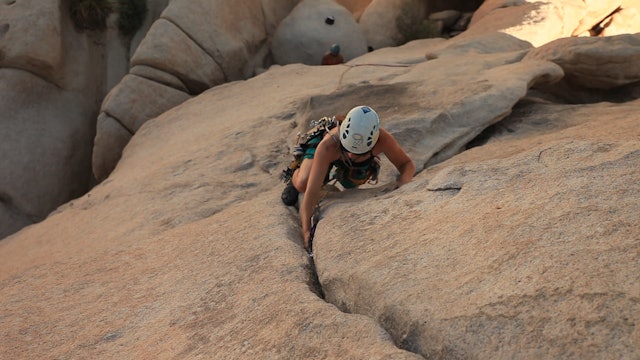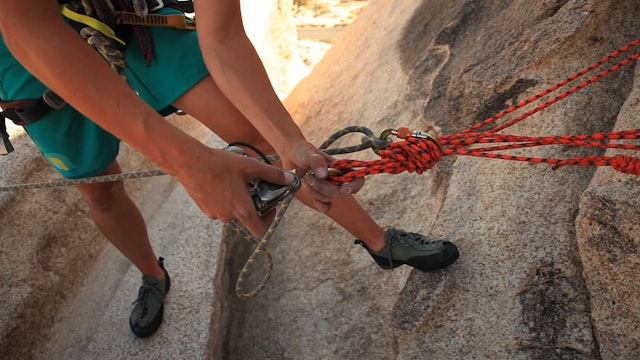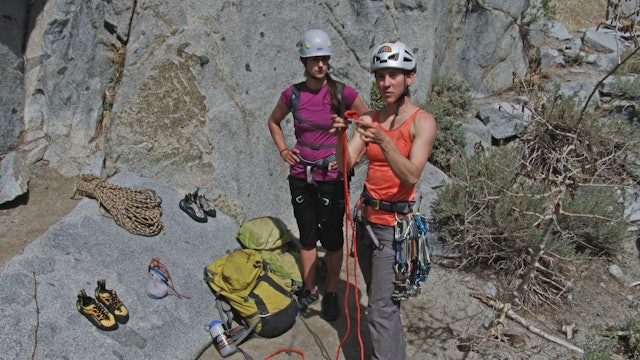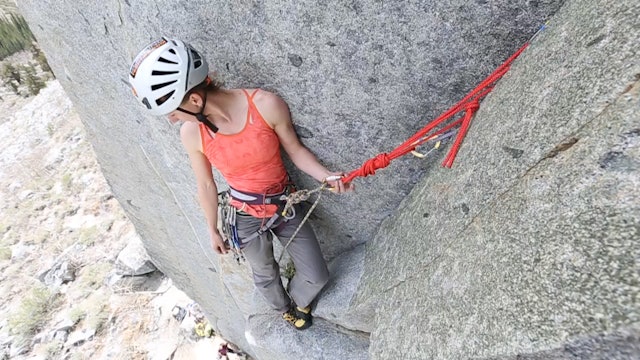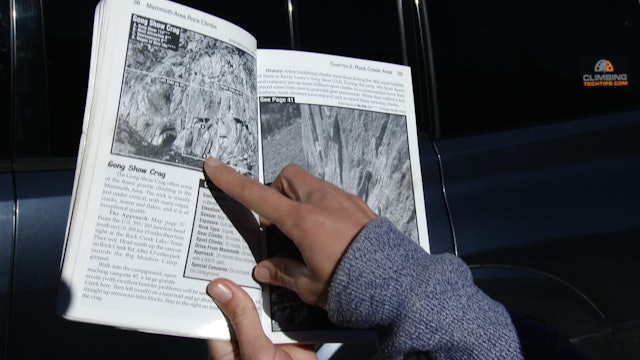Multi-Pitch Trad Climbing
Our Multi-Pitch Trad Climbing video series helps prepare you for bigger days, longer routes, multiple pitches, and committing adventure climbs.
Multi-Pitch Trad Climbing is considered an advanced discipline of rock climbing. Before viewing this series, be sure you have the skills dialed from our previous video series. Take some time to make sure you have had enough practice and instruction in gear placement, anchor building, and rope work, as well as the movement skills to keep you safe on your route.
Let’s get started! Our Multi-Pitch Trad Climbing video series is below. Be careful, and have fun!
Know & Go with ClimbingTechTips.com
Please remember, climbing is inherently dangerous. Climb at your own risk.
-
Multi-Pitch Trad: 1. Understanding & Using a Reverso
In this video we discuss the benefits of a plaquette belay device. This is a type of belay device which locks the climber’s rope in position when they fall. Brands include the Reverso from Petzl and the ATC Guide from Black Diamond.
1. While current standard practice says that a plaquette dev...
-
Multi-Pitch Trad: 2. Belay Transitions
In this video we look at belay transitions during multi-pitch climbing. You’ll notice the theme throughout these considerations is efficiency. Time management in multi-pitch climbing is crucial when trying to make the most of daylight hours. Below are a few tips to consider for belay transitions:...
-
Multi-Pitch Trad: 3. Gear Considerations
In this video we look at the gear we often take on multi-pitch, traditional route. Every climb is unique and may require more or less gear depending on the weather, number of pitches, and length of the approach hike. Below is an example checklist for a 3-pitch route in the Sierra Nevada, expectin...
-
Multi-Pitch Trad: 4. Gear Logistics
First, decide with your climbing partner how you will lead and follow the route. There are two main strategies:
Swinging leads - This method entails each climber alternating leads and belays on each pitch throughout the climb.
Leading in blocks - This method entails one climber leading each...
-
Multi-Pitch Trad: 5. Non-Verbal Communication
What happens when you can’t hear your leader yell “off belay!” An understanding of non-verbal communication is a simple skill, rooted in a few simple, common sense observations, that can add a tremendous amount of safety and efficiency to your climbing partnership.
Perhaps you have learned to ...
-
Multi-Pitch Trad: 6. Preparation
When you want to get out on a multi pitch route, how do you select and prepare for that route? How do you set yourself up for a successful day? In this video, we talk about the process from selection to preparation and approach! Below we take you through three levels of preparation: Macro, Meso, ...
-
Multi-Pitch Trad: 7. Racking up for the Climb
In this video we review the steps you’ll take when preparing to climb at the base of the route.
RACKING
Slings and Alpine Draws - Decide on whether to carry these over your shoulder or to re-draw them and clip them to your gear loop. Being consistent will aid in efficiency.Gear Sling vs. ...
-
Multi-Pitch Trad: 8. Racking Part 1 of 2
We have arrived at the base of our route and now we want to ready ourselves for the climb! Here are the next steps as you set off into the vertical environment.
1. Lay out all of the gear for your climb, organized by type, on a dry surface.
2. Put on your helmet and harness. The following a...
-
Multi-Pitch Trad: 9. Racking Part 2 of 2
Now we are just about ready to launch onto our climb for the day. Here are a few more thoughts:
1. Bring comfortable shoes for long day on the rock. A good pair of high-performance, comfortable shoes are worth the investment!
2. Below are a few racking considerations for racking climbing ge...
-
Multi-Pitch Trad: 10. Tying & Racking a Cordelette
A cordelette is an excellent tool for a multi pitch climb. It is versatile and useful—it can be used in anchors and in rescues. In this video we use a 7mm cordelette, which is the middle ground between being versatile but not too bulky, that is 20 feet long.
1. Tie the cordelette into a loop b...
-
Multi-Pitch Trad: 11. Partner Communication
In this video we review an important consideration for partner communication when multi-pitch trad climbing.
When using verbal commands during a climb, be sure to say your partner's name along with the command. This helps make sure that commands don’t get mixed up or mistaken for other climbe...
-
Multi-Pitch Trad: 12. Retreating from a Route
What happens if you run out of time, take too long, or if unexpected weather rolls in while you are mid route? In this video, we consider the importance of retreating from a route. It’s important to know that not all multi-pitch routes allow you to retreat mid-route or rappel the route.
When ...
-
Multi-Pitch Trad: 13. Route Logistics
In this video we review a few considerations for route logistics for multi-pitch trad climbing. When heading out for a multi-pitch climb be sure to pack the essentials:
- Water
- Food
- First Aid Kit
- Headlamp w/ fresh or spare batteries
- Phone/communication device
- Wind shirt
- Bela... -
Multi-Pitch Trad: 14. Finding the Route and Descent
In this video we review the art of finding the route—as well as the descent. Once you’ve done your research and selected which route(s) to climb, use the following procedure to help you identify the route and descent.
1. Starting from the car, or even while hiking on the approach, look at the ...
-
Multi-Pitch Trad: 15. Wandering Routes
In this video, we discuss how to manage wandering routes. Most long traditional multi-pitch climbs will wander at some point, as they travel between major features. You might need to traverse on a ledge, for example, to link up with another crack system. Changes in direction can create rope drag ...
-
Multi-Pitch Trad: 16. Weather
In climbing, weather can be one of the most important factors, affecting enjoyment at best—and safety at worst. Monitor the weather for several days before your climb, or even better, get in the habit of familiarizing yourself with your favorite area’s weather patterns, checking forecasts and rep...
-
Multi-Pitch Trad: 17. Swapping Leads vs. Leading in Blocks
In this video we review the reasons you might choose to swap leads or lead in blocks.
Swapping Leads: Also known as swinging leads. This is where the climbing team alternates leading each pitch.
- You might assign odd or even numbered pitches to each teammate based on which climber wants to...
